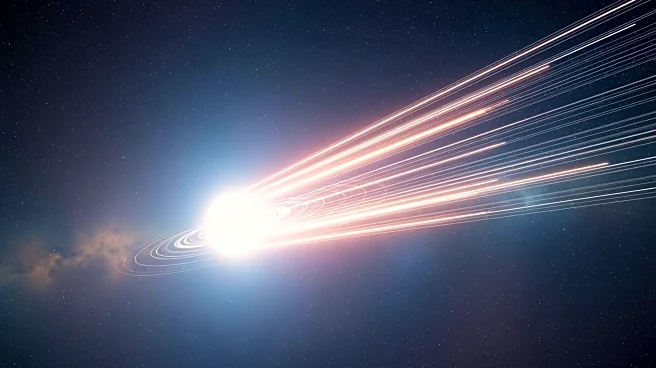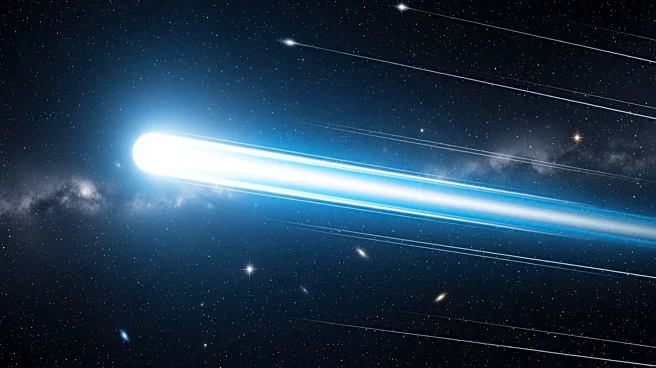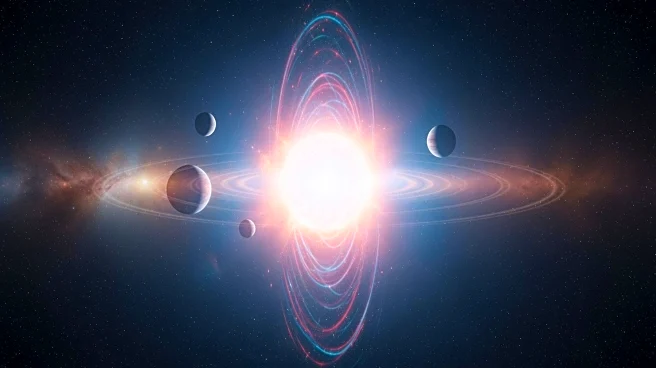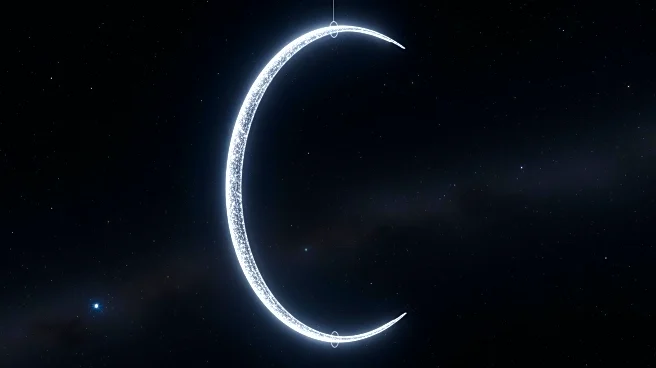What's Happening?
Physicists led by Lukas Böhme at Bielefeld University have discovered that the solar system is moving through space at a velocity more than three times greater than previously thought. The solar system is traveling
at approximately 828,000 kilometers per hour relative to the cosmic microwave background, which is considered the universe's 'rest frame.' This finding challenges the cosmological principle, which posits that the universe is isotropic and homogeneous on large scales. The team used data from radio galaxies and the Low Frequency Array telescope to measure this unexpected speed, suggesting a need to reassess the standard cosmological model.
Why It's Important?
The discovery has significant implications for cosmology, as it questions the cosmological principle that underpins much of modern cosmology. If the solar system is moving faster than expected, it could indicate that the universe is not as uniform as previously believed. This could lead to a reevaluation of the large-scale structure of the universe and the assumptions about the distribution of matter. The findings align with earlier studies on quasars, suggesting consistency across different observations and reducing the likelihood of measurement errors.
What's Next?
Future large-scale radio surveys, such as those from the Square Kilometer Array, may provide further insights into the solar system's velocity and its implications for cosmology. These surveys could help determine whether the findings are a genuine cosmic anomaly or a result of systematic measurement issues. The ongoing research may lead to a major shift in understanding the universe's structure and motion.
Beyond the Headlines
The revelation could trigger a broader discussion on the assumptions of cosmology and the methodologies used in measuring cosmic phenomena. It may also influence future research directions in astrophysics and cosmology, potentially leading to new theories about the universe's expansion and structure.











